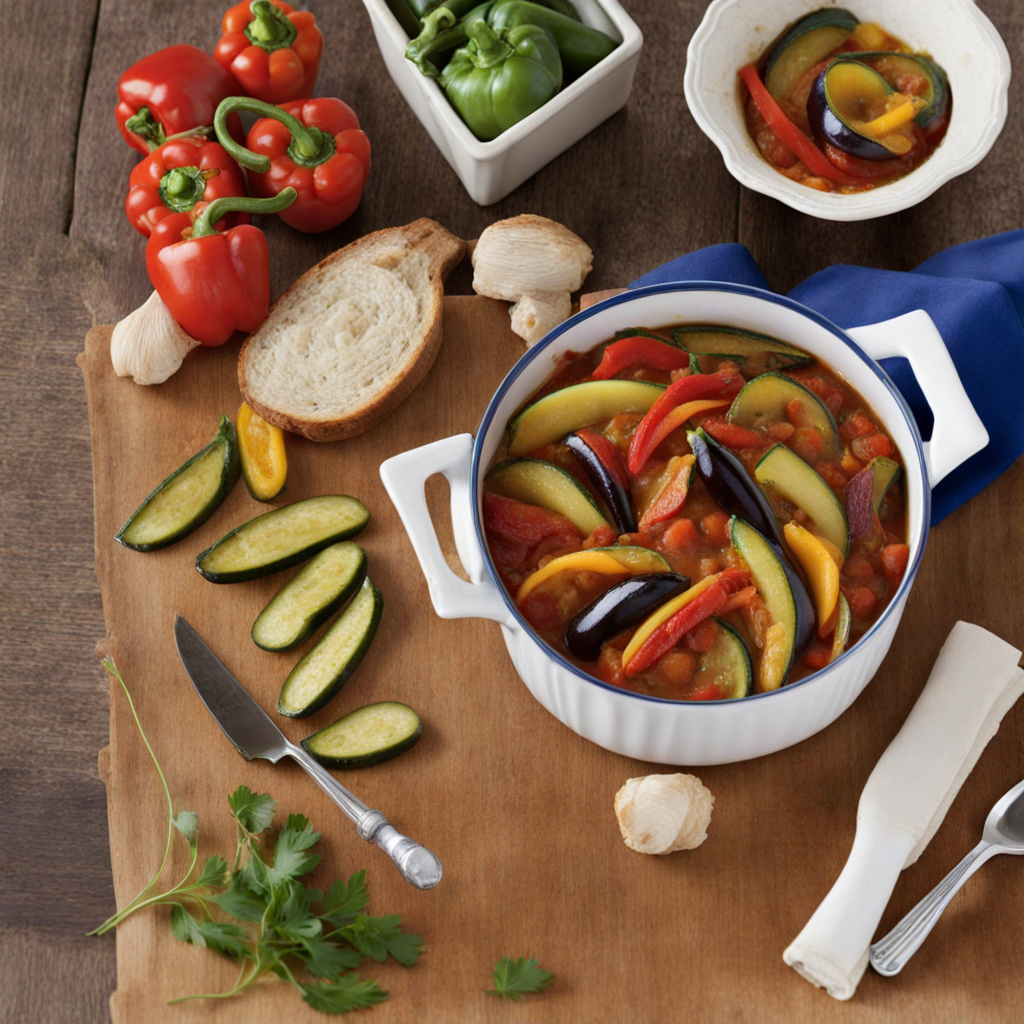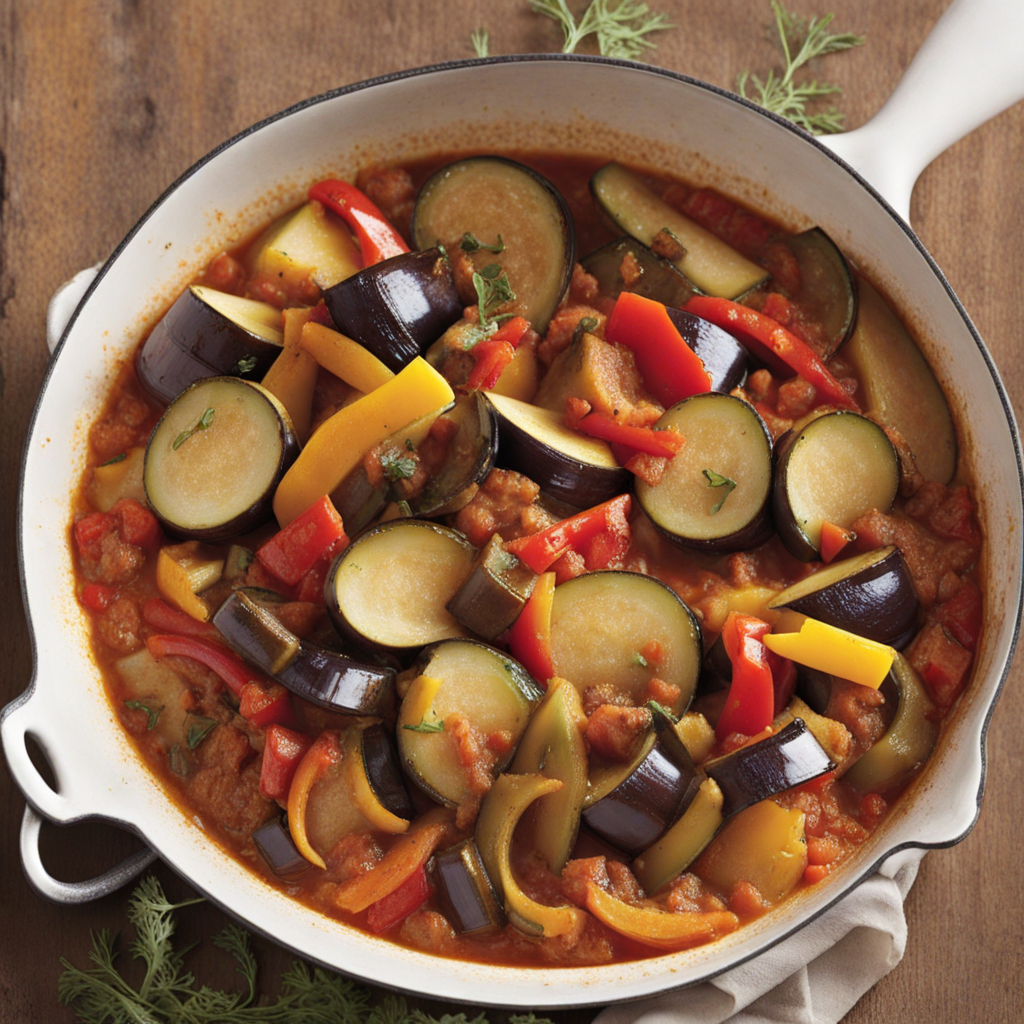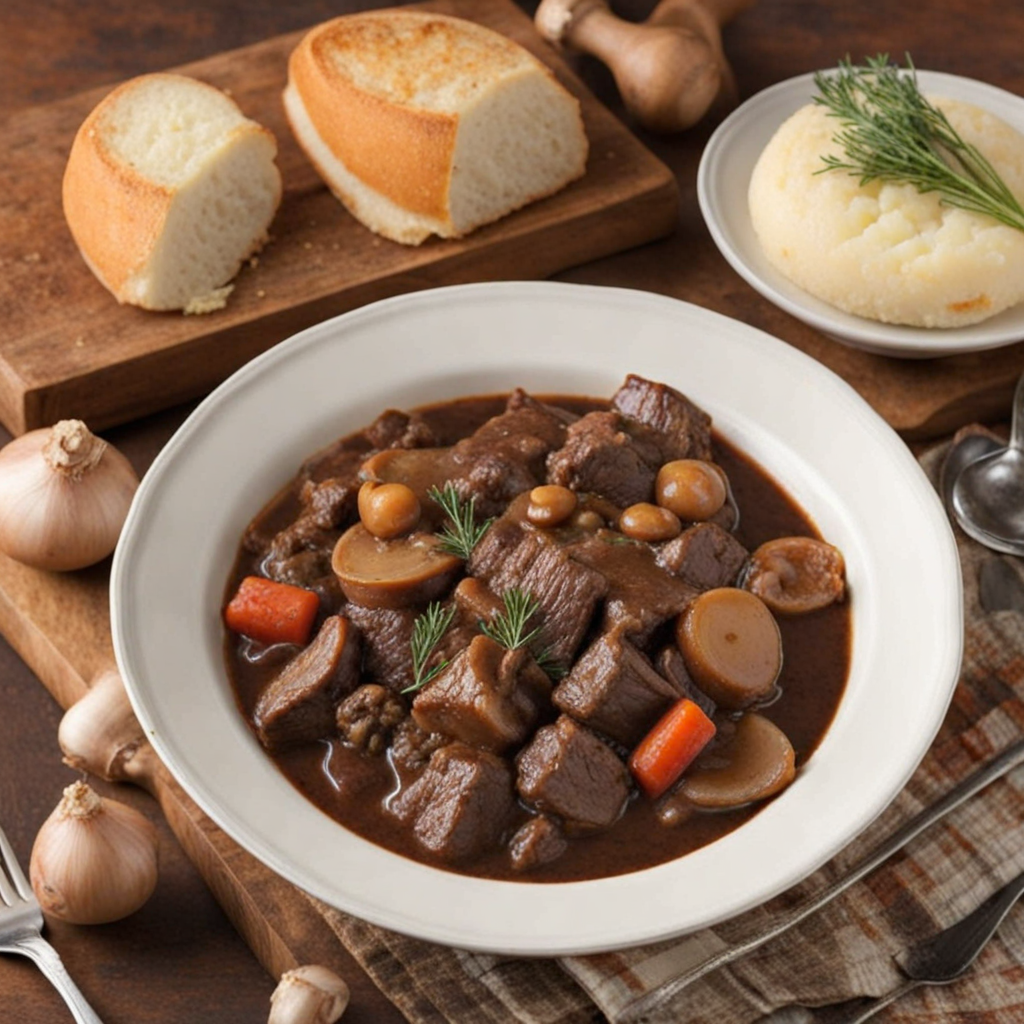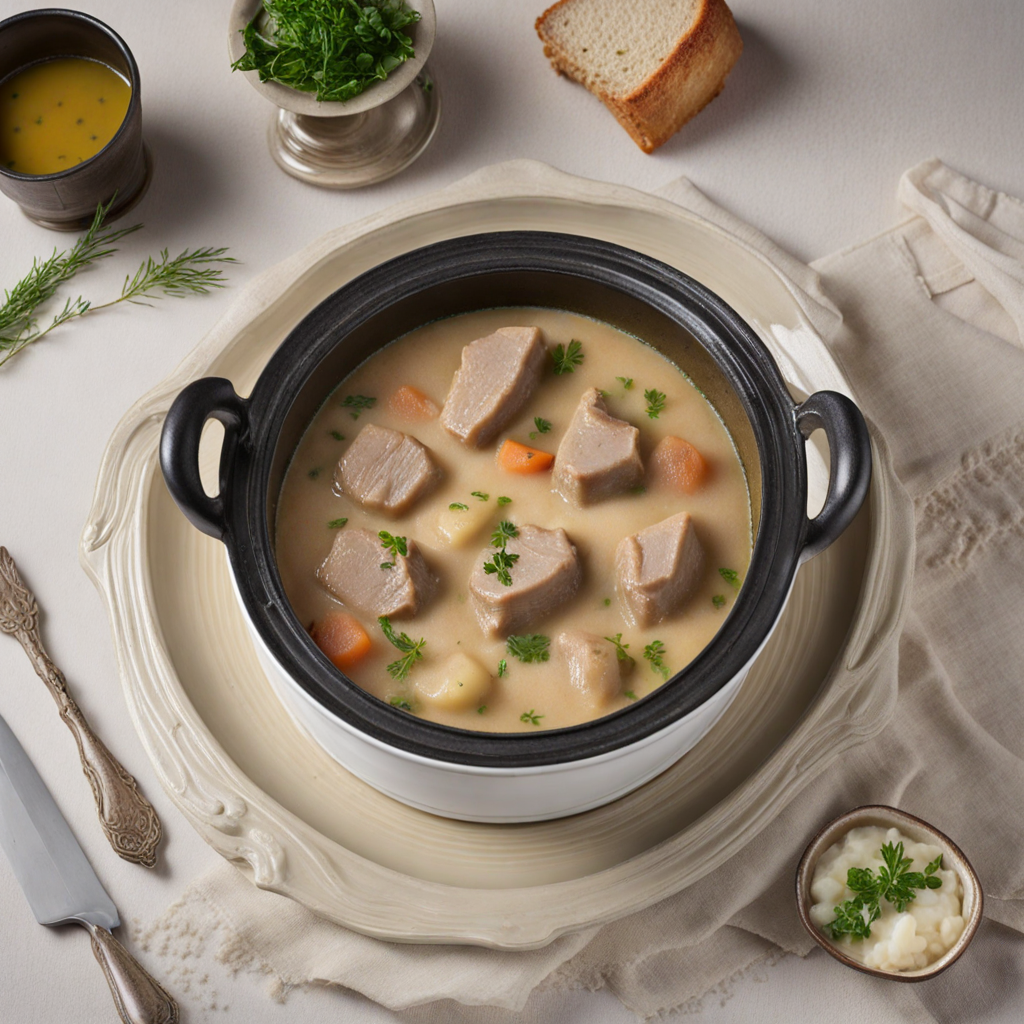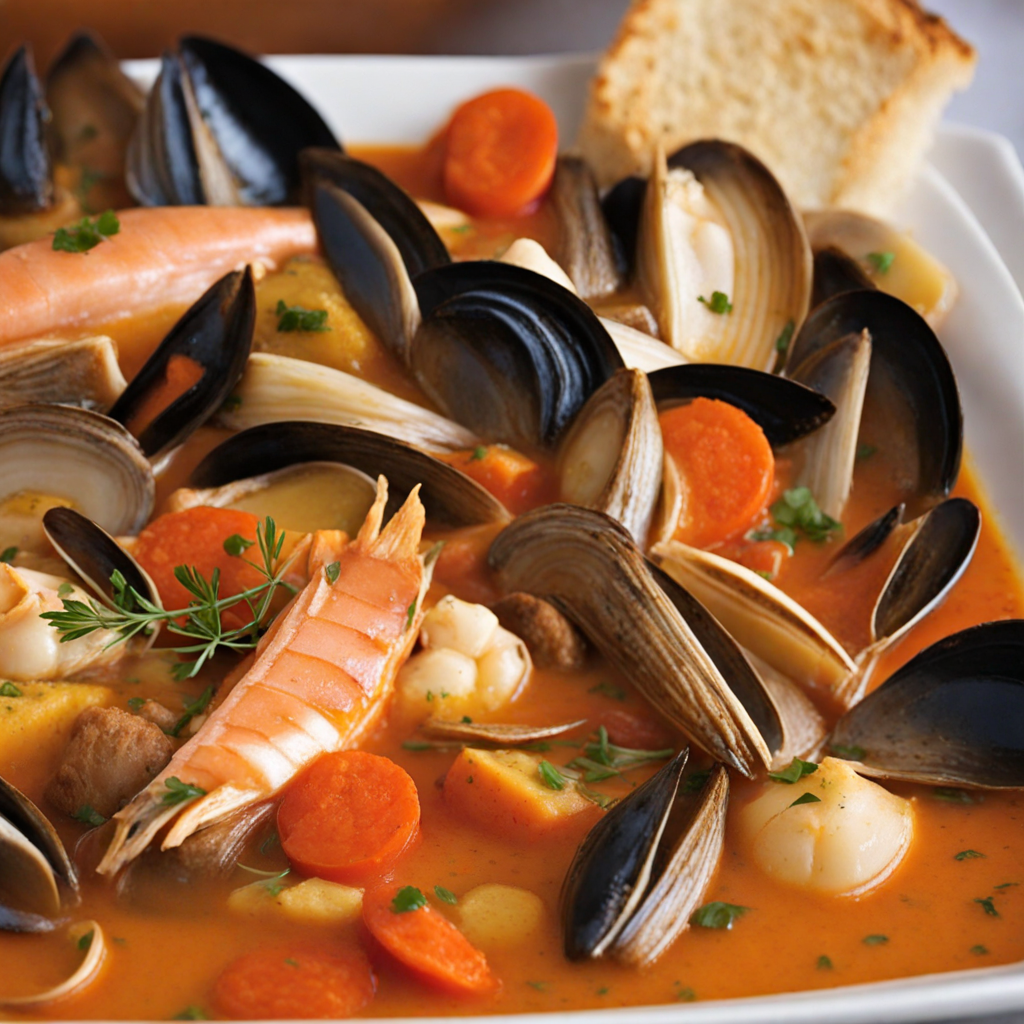Ratatouille
Ratatouille is a vibrant and flavorful dish that embodies the essence of Provençal cuisine in France. This rustic vegetable stew is primarily made from a medley of fresh, seasonal vegetables, including eggplant, zucchini, bell peppers, tomatoes, onions, and garlic. Each ingredient is carefully selected for its unique taste and texture, and they are often sautéed individually before being combined, allowing each vegetable to retain its distinct flavor. The use of olive oil and herbs such as basil, thyme, and parsley further elevates the dish, infusing it with aromatic depth and a touch of Mediterranean sunshine. Traditionally, ratatouille is cooked slowly, allowing the flavors to meld beautifully. The result is a colorful, hearty dish that can be served warm or at room temperature, making it a versatile option for any meal. It can be enjoyed on its own, as a side dish, or even as a topping for crusty bread or polenta, showcasing its adaptability. The interplay of the sweet, tender vegetables creates a comforting yet sophisticated experience that captures the soul of rustic French cooking. Ratatouille not only celebrates the bounty of fresh produce but also reflects the French philosophy of savoring simple, wholesome ingredients. Its vibrant colors and rich flavors make ratatouille a feast for both the eyes and the palate. Whether enjoyed in a quaint French bistro or made at home, this dish invites you to savor the essence of summer and the warmth of French culinary traditions.
How It Became This Dish
The History of Ratatouille: A Culinary Journey Through France Ratatouille, a dish that has become synonymous with French cuisine, is often envisioned as a vibrant medley of summer vegetables, steeped in olive oil, and seasoned to perfection. The name itself evokes images of rustic French kitchens, sun-drenched Provençal landscapes, and the heartwarming tales of family gatherings around a table laden with seasonal produce. To truly appreciate ratatouille, we must delve into its origins, cultural significance, and the evolution of this beloved dish over time. #### Origins of Ratatouille The roots of ratatouille can be traced back to the Provence region of southern France, where the Mediterranean climate produces a bounty of fresh vegetables. While it is often associated with the 19th century, the concept of ratatouille likely predates it, emerging from the peasant cuisine of the region. The word "ratatouille" itself derives from the French verb "ratatouiller," which means "to stir up," and reflects the dish's simple preparation method. Originally, ratatouille was a dish of necessity, crafted to use up the surplus of vegetables available during the harvest season. Farmers and families would gather whatever produce was on hand—typically eggplant, zucchini, bell peppers, tomatoes, and onions—sautéing them together in a single pot. This method not only minimized food waste but also allowed cooks to bring out the natural flavors of the vegetables, often enhanced with herbs such as basil and thyme. The earliest known recipes for ratatouille can be found in the cookbook "La Cuisinière Provençale," published in 1778 by the chef and author, François Pierre La Varenne. However, these early versions were more akin to vegetable stews rather than the refined dish we know today. It wasn’t until the 19th century that ratatouille began to take on its current form, particularly in the bustling markets of Nice, where local chefs began to add their flair. #### Cultural Significance Ratatouille is more than just a dish; it represents the essence of Provençal cooking—simplicity, freshness, and seasonality. It embodies the philosophy of "terroir," which emphasizes the importance of local ingredients and traditional methods. In many ways, ratatouille serves as a culinary reflection of the region's identity, celebrating the vibrant produce that grows in the Mediterranean sun. In the context of French culture, ratatouille has also become a symbol of home-cooked meals and familial bonds. It is a dish often prepared in family kitchens, handed down through generations, and shared at gatherings. The communal aspect of sharing a pot of ratatouille resonates deeply within French culture, where food is an integral part of social interaction. Moreover, ratatouille gained international recognition thanks to the 2007 animated film "Ratatouille," which tells the story of a rat named Remy who dreams of becoming a chef in Paris. The film not only showcases the dish but also elevates it to a metaphor for creativity, passion, and the pursuit of one's dreams. This portrayal has further solidified ratatouille's status as an iconic representation of French cuisine, inspiring home cooks worldwide to embrace the dish. #### Evolution Over Time As ratatouille evolved, so did its preparation and presentation. The traditional rustic style began to undergo transformation in the 20th century, particularly with the rise of nouvelle cuisine in the 1970s. Chefs started to experiment with the dish, refining its aesthetics while maintaining its core flavors. Instead of simply tossing the vegetables together, many chefs began to present them in more artistic arrangements, often employing techniques such as confit or layering to elevate the dish. One notable variation that emerged is "ratatouille niçoise," which specifically hails from Nice and includes additional ingredients such as garlic, olives, and sometimes even capers. This version reflects the diverse culinary influences of the region, showcasing how local adaptations can give rise to new interpretations of a classic dish. In contemporary cuisine, ratatouille can be found in various forms, from traditional stews to sophisticated plated versions in gourmet restaurants. Its versatility allows it to be served as a main dish, a side, or even as a filling for pastries and tarts. The dish has also found its way into vegetarian and vegan diets, further expanding its appeal in a world increasingly focused on plant-based eating. In recent years, the trend of "deconstructed" dishes has also influenced how ratatouille is served. Chefs may present the vegetables separately, highlighting each one's unique flavor and texture, while still maintaining the essence of the dish. This approach exemplifies the ongoing dialogue between tradition and innovation in the culinary arts. #### Ratatouille in the Modern Culinary Landscape Today, ratatouille is celebrated not only as a classic French dish but also as a universal symbol of healthy eating and sustainability. With an increasing emphasis on farm-to-table practices and the locavore movement, ratatouille has gained renewed interest among chefs and home cooks alike. It serves as a perfect example of how seasonal ingredients can create a dish that is both satisfying and nutritious. Home cooks are increasingly inspired to recreate ratatouille, experimenting with different vegetables, herbs, and spices. The dish's adaptability allows for personalization, catering to individual tastes and dietary preferences. Whether served hot or cold, as a main course or a side, ratatouille continues to resonate with the ethos of modern cooking—simple, healthy, and full of flavor. #### Conclusion Ratatouille is a dish that encapsulates the spirit of French cuisine: a celebration of fresh, local ingredients, a reflection of cultural identity, and a testament to the power of home cooking. From its humble beginnings in the kitchens of Provence to its status as a global culinary icon, ratatouille has transcended time and geography, remaining relevant in today's food landscape. As we savor each bite, we are reminded of the rich history and cultural significance that this dish carries—an enduring symbol of the joy of cooking and sharing meals with loved ones.
You may like
Discover local flavors from France


